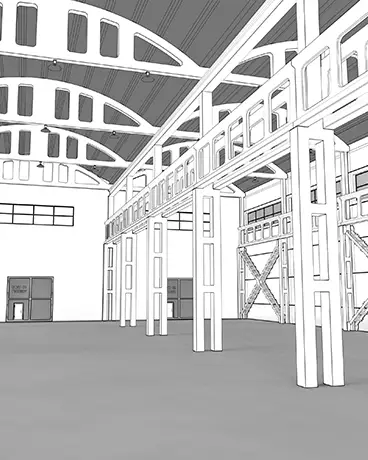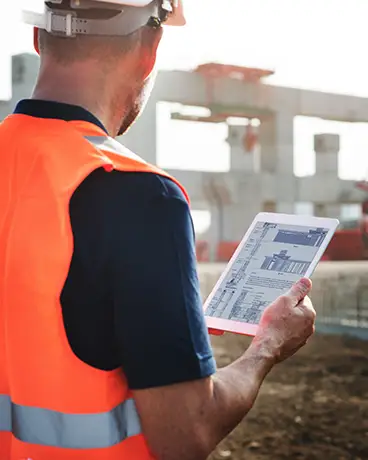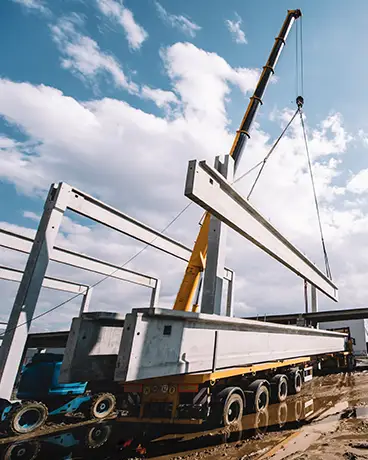Enhancing Cost Efficiency in Construction
How smart commercial construction firms are optimizing time and productivity
Every company in the construction trade wants to improve cost efficiency. But accomplishing that is a never-ending quest. Fortunately, there are innovative practices and solutions available today that can lower costs without compromising quality. That means higher profits and better outcomes for everyone.
In the pursuit of efficiency, some common-sense solutions are freely available and already implemented by smart operations.
For instance, transportation costs are a large expense category for most construction projects. So, locating a company’s headquarters or building site near a transportation hub can lower those costs. Reducing the idle time for trucks and other equipment can do the same.
Cost-Efficient Materials for Commercial Construction
The cost of materials is usually beyond the control of project managers. And the impact of inflation has been particularly severe for the materials most commonly used in construction: concrete, timber and steel. Continued rising demand suggests that the trend will continue.
But builders can economize by choosing materials that cost less while providing the same or better strength and durability. Some examples:
Laminated Veneer Lumber
Lumber prices have skyrocketed in recent years due to rising demand and layoffs in the lumber mills. But builders can moderate costs by using laminated veneer components instead of solid timber. Plywood panels are the most recognizable form of this product, but laminated veneer is also useful for beams and other structural components. By alternating the grain direction between layers, laminated components achieve a strength that isn’t possible with solid timber. And they cost less.


Autoclaved Aerated Concrete
This product incorporates the strength, fire resistance, and insulating properties of concrete with flexibility and ease of use. Comprised mostly of air, it is lighter in weight than conventional concrete, so it can be cast in larger slabs and blocks. It is useful for walls, floors and roofs.
Cost-Efficient Technology for Commercial Construction
Like every industry, construction is subject to changing economic conditions, the labor market, compliance costs, and the price of materials. Further, being a largely outdoor enterprise, it will always be somewhat dependent on the weather. But new technology is changing the way construction is done. The result is a more cost-efficient process—for those entities smart enough to embrace the changes.
Here are some tech-savvy solutions that are leading the way in improving cost-efficiency in the commercial construction sphere:
Integrated Project Delivery
With the traditional design-build approach to construction, the various stakeholders act as independent entities. But that arrangement can lead to adversarial relationships that hinder productivity. Instead of working together, the project owner, architect, general contractor and subcontractors can find themselves pitted against each other. Too often, the result is miscommunication, work delays, and even lawsuits. Integrated project delivery seeks to avoid these conflicts by incorporating all stakeholders into a unified team. As signatories to a multi-party agreement, they share the same goals and vulnerabilities. Their association can take the form of a single purpose entity—a temporary legal structure formed for the purpose of completing the project. When applied correctly, this approach makes projects smoother, more collegial—and more efficient.


Lean Construction Principles
The pitfalls of traditional construction have fueled the development of a countermovement in recent years. Lean construction incorporates the principles of integrated project delivery along with other waste-reducing practices to make the construction process more efficient overall. The Lean Construction Institute notes that while productivity in most industries has increased dramatically in recent decades, it has actually decreased in the construction industry. The Institute is committed to reversing that trend by emphasizing collaboration and enlightened management. The practices of lean construction are being adopted by more and more entities, leading to greater productivity and more satisfying results.
Building information modeling
This technology enables construction teams to create a digital replica or model of a structure with all its components and systems. The model can be modified and updated to reflect design changes and stages of completion. Building information modeling (BIM) is an invaluable tool for teams that use an integrated project delivery approach. It allows all the participants to see the proposed structure from the design phase forward. They can monitor its progress and weigh in with suggestions or concerns—all without leaving their desks. BIM programs can greatly facilitate the smooth completion of a construction project, saving money and time.


Real-time data and analytics
Improving efficiency in any construction enterprise requires accurate, timely information. Today’s project management programs enable construction firms to collect real-time data on their activities and, most importantly, quickly pinpoint areas that warrant improvement. In the tumult and chaos of a building project, it can be hard to recognize inefficiencies as they are occurring. But when information-gathering is automated, it enables project managers to spot trouble in time to make necessary changes. It also reduces the likelihood of human error. Potential safety hazards can be identified proactively. And subcontractor performance can be monitored for compliance.
Offsite Prefabrication and Modularization
Construction is no longer an activity conducted strictly at outdoor building sites. The practicality of manufacturing some building components in a factory setting is inescapable. Working in a controlled environment improves accuracy and enhances worker safety. Construction teams can avoid the hindrances of rain, snow, extreme heat and cold. They don’t have to contend with variations in the terrain or unfamiliar work environments. Most importantly, they can keep working all year round. Using factory-produced modular components guarantees uniformity and makes the building process more predictable. And the assembly line approach makes the products much more economical to produce. Prefabrication and modularization are revolutionizing the way buildings are made—and the results are good for builders, owners, and the bottom line.

All these innovations make the construction process more efficient and cost-effective—for those firms that use them. With bold, forward-looking thought leaders and project managers forging the path, the outlook for the industry is bright.



